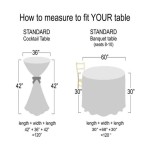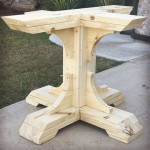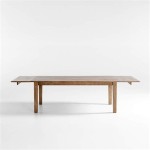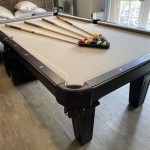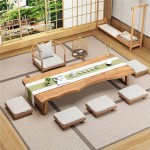Standard Dimensions of a Table Tennis Court Size Chart
Table tennis, also known as ping-pong, is a dynamic and engaging sport enjoyed by individuals of all ages and skill levels. While the game can be played recreationally in various settings, competitive play demands adherence to specific regulations, particularly concerning the dimensions of the playing area. Understanding the standardized dimensions of a table tennis court is critical for both players and organizers to ensure fair play and consistent competition. This article delves into the precise measurements of a table tennis court, examining the table itself, the surrounding playing space, and other relevant factors that contribute to a standardized playing environment.
The International Table Tennis Federation (ITTF) governs the rules and regulations of table tennis worldwide. The ITTF specifies the precise dimensions for all official equipment used in competition, including the table, net, and surrounding playing area. These specifications are designed to provide a level playing field for all competitors, regardless of location. Furthermore, adherence to these standards contributes to the consistency and integrity of the sport at all levels, from amateur leagues to professional tournaments.
A table tennis "court" actually comprises two distinct components: the table itself and the surrounding playing space. The table is the primary surface upon which the game is played, while the surrounding space provides room for players to move freely and react to the ball. Both of these elements are subject to precise dimensional requirements.
The Table Tennis Table: Dimensions and Specifications
The table tennis table is a rectangular surface divided into two equal halves by a net. The ITTF stipulates the following dimensions for an official table tennis table:
Length: 2.74 meters (9 feet)
Width: 1.525 meters (5 feet)
Height: 76 centimeters (30 inches) from the floor to the top playing surface.
These dimensions are rigorously enforced in official competitions. The table must be made of a solid material, typically medium-density fiberboard (MDF), and must provide a uniform bounce. The surface is usually coated with a dark, matte finish, typically dark green or dark blue, to minimize glare and provide optimal visibility of the ball.
The table also features a white line, 2 centimeters (approximately 0.79 inches) wide, along each edge. These lines designate the edges of the playing surface during both singles and doubles play. For doubles, each half of the table is further divided by a thin, white center line, 3mm (approximately 0.12 inches) wide. This center line has relevance only during doubles service; the serve must bounce in the server’s right half of the table and then in the receiver’s right half.
The net assembly consists of the net itself, the supports, and the clamps used to attach the assembly to the table. The ITTF specifies the following for the net assembly:
Height: The top of the net must be 15.25 centimeters (6 inches) above the playing surface.
Length: The net must extend 15.25 centimeters (6 inches) beyond each side edge of the table.
The net must be suspended by a cord attached to the supports, ensuring it remains taut and at the correct height across the entire width of the table. The supports should be positioned outside the sidelines of the table. The clamps must be designed to securely attach the net assembly to the table without damaging the playing surface.
Playing Space: Dimensions and Considerations
Beyond the dimensions of the table itself, the surrounding playing space is equally critical. The ITTF recommends minimum dimensions for the playing space to allow players adequate room to move, react, and retrieve the ball. The recommended playing space is significantly larger than the table dimensions to accommodate the dynamic movements inherent in the sport.
The ITTF specifies the following minimum dimensions for the playing space:
Length: 14 meters (approximately 46 feet)
Width: 7 meters (approximately 23 feet)
These dimensions represent the minimum recommended space for competitive play. Larger spaces are often preferred, particularly in tournament settings, to provide more comfortable movement for players and officials.
The playing space should be free from obstructions, such as walls, furniture, or other equipment. Adequate lighting is also crucial, ensuring uniform illumination across the entire playing area. The lighting should minimize shadows and glare, allowing players to clearly see the ball at all times. The recommended light intensity is typically between 500 and 1000 lux, depending on the level of competition.
It's important to note that these are *minimum* dimensions. Many competitive venues, particularly those hosting higher-level tournaments, will provide significantly more space. More space allows for better player movement, reduces the chance of players colliding with obstacles, and improves the overall experience for both players and spectators. For recreational play, the minimum dimensions may be relaxed depending on the available space, but adherence to the ITTF recommendations is always preferable.
Impact of Court Dimensions on Gameplay
The dimensions of both the table and the surrounding playing space significantly influence the style of play in table tennis. A smaller playing space restricts player movement, favoring a more defensive style where players primarily focus on blocking and returning shots from close to the table. In contrast, a larger playing space allows for more aggressive play, with players having the room to step back from the table and generate more power in their shots. This allows for looping and other offensive techniques that require greater distance to execute effectively.
The height of the table and net also plays a crucial role. The standard height of 76 centimeters for the table and 15.25 centimeters for the net are designed to create a balance between challenging and playable conditions. If the net were too high, it would be difficult to execute spin shots effectively. Conversely, if the net were too low, it would be too easy to attack every ball, reducing the strategic complexity of the game.
The playing surface itself also affects gameplay. The consistent bounce provided by a standardized table allows players to accurately predict the trajectory of the ball, enabling them to react quickly and effectively. Variations in the playing surface, such as unevenness or inconsistency in the bounce, can significantly disrupt a player's timing and accuracy.
In summary, the standardized dimensions of the table tennis court, including the table, net, and playing space, are not arbitrary. They are carefully designed to promote fair play, consistent competition, and a balance between offensive and defensive strategies. By adhering to these standards, table tennis ensures a level playing field for all participants and maintains the integrity of the sport at all levels.
Understanding these dimensions extends beyond competitive play, impacting recreational settings as well. Knowing the ideal space needed allows for optimal enjoyment and development of skills, even when playing for leisure.

Table Tennis Room Size Court And Dimensions
Table Tennis Players And Playing Areas Factfile Gcse Physical Education Revision Wjec Bbc Bitesize

Ping Pong Table Size Guide And Dimensions Official Rules Racket Insight

Ping Pong Table Dimensions Diy

Table Tennis Scientific Diagram

Table Tennis

Table Tennis Size Dimensions Aussie

A Comprehensive Guide To Ping Pong Table Dimensions

Ping Pong Table Dimensions Sports Dimensia

Table Tennis Room Size Home Space Guide Racket Insight



